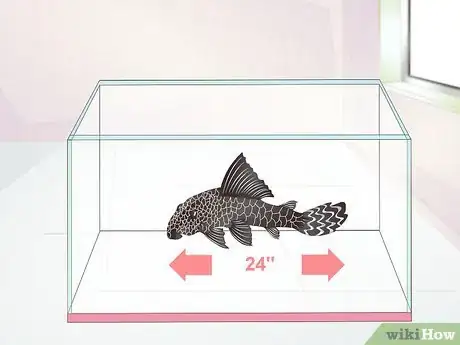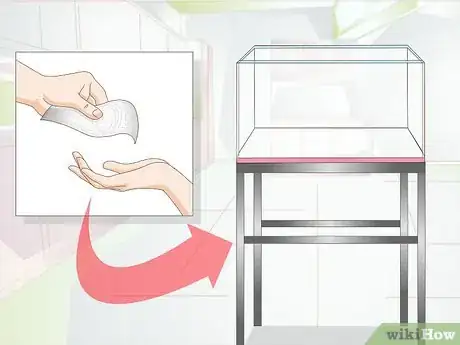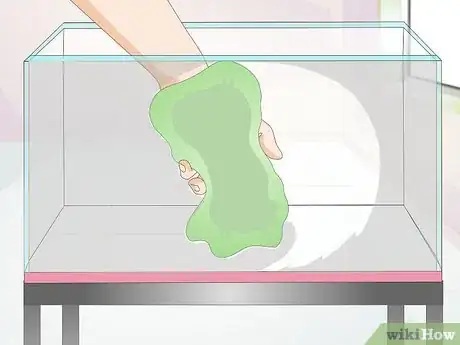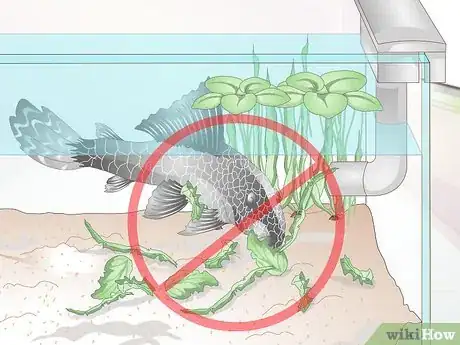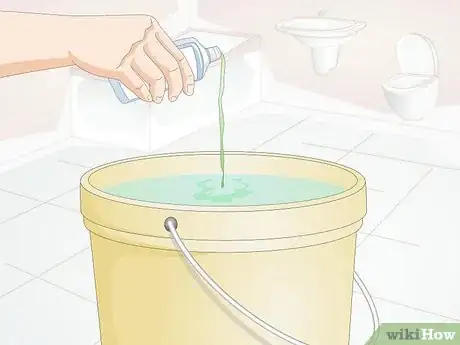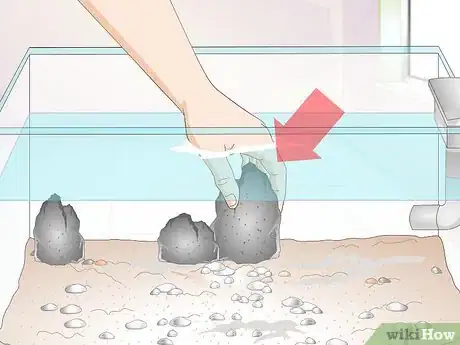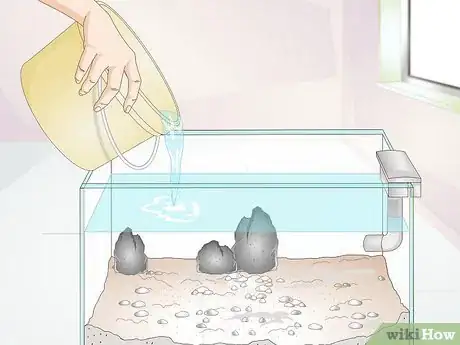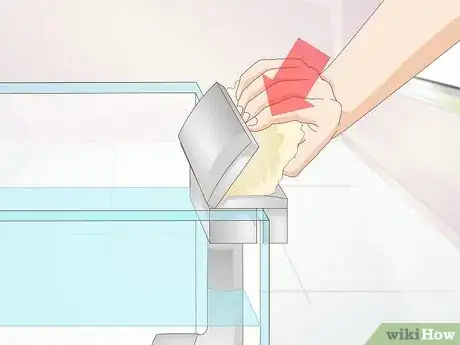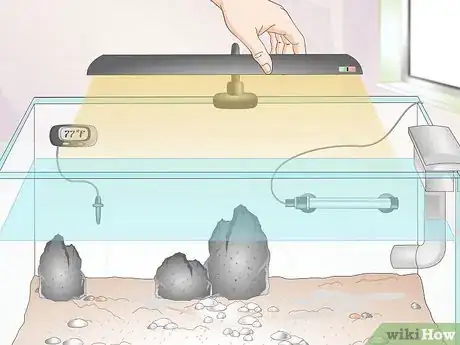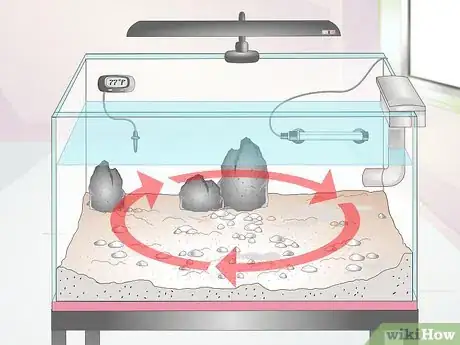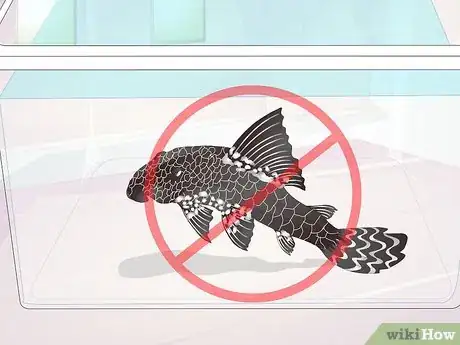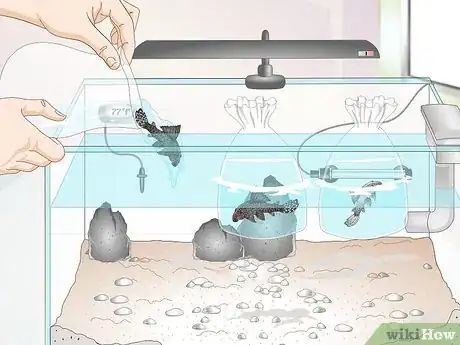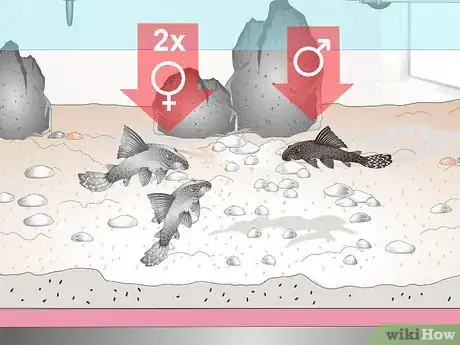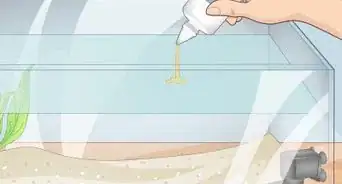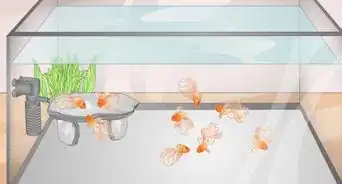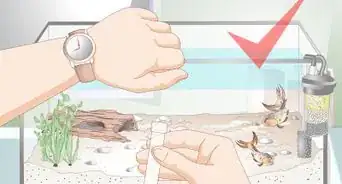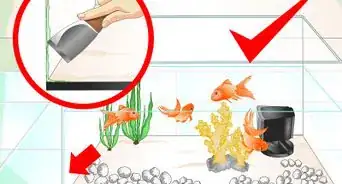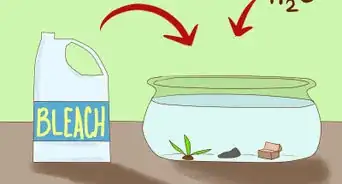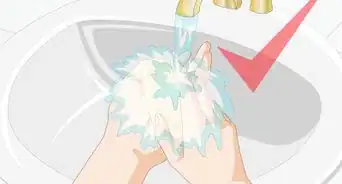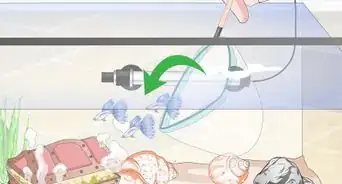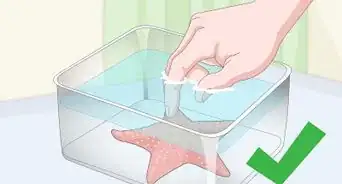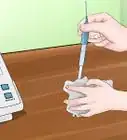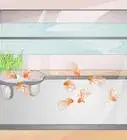This article was co-authored by Craig Morton. Craig Morton is the CEO of Aquarium Doctor Inc. based in Huntington Beach California and servicing Orange County, Los Angeles County, and the Inland Empire. With over 30 years of aquarium experience, Craig specializes in creating custom aquarium designs along with aquarium installation, service, and maintenance.
There are 12 references cited in this article, which can be found at the bottom of the page.
wikiHow marks an article as reader-approved once it receives enough positive feedback. In this case, 100% of readers who voted found the article helpful, earning it our reader-approved status.
This article has been viewed 37,455 times.
Plecostomus catfish, or pleco, are great fish for a pet. They clean up after other fish and will eat anything. This fish species has special needs that need to be met for it to live the longest life it can. In order to set up a fish tank for your pleco, it's important to purchase the best tank, prepare the tank for your catfish, and introduce your pleco to their new tank. Setting up a fish tank for a pleco correctly will make sure your fish is comfortable in its new home.
Steps
Purchasing and Preparing a Tank for your Plecostomus Catfish
-
1Buy the right size tank. Pleco catfish can be large, so it's important to have a tank big enough for their size and how many plecos you want to have. Plecos can be up to 15-24 inches long when they're fully grown.
- Your tank should ratio should be 1 gallon of water for one inch of fish.
- Pleco catfish live for 20-30 years, so it will take them awhile to reach their full grown size. You can always get a new tank when your pleco reaches its full size.
- For many plecos, a 100 gallon tank is the best size tank. This will make sure your pleco has room to grow. Additionally, this size will allow you to add more plecos later.
-
2Purchase and place your aquarium stand. You'll want to make sure that you have a stand to support your large tank. This will make sure your tank is secured and won't fall over.[1]
- Iron and wood stands are the most common type of stands for aquariums. Wood stands are more expensive, but sturdier.
- Pur your aquarium stand in a low traffic area to avoid it being knocked over. Keep it out of direct sunlight as well as away from heating or cooling ventilation.
Advertisement -
3Scrub the fish tank once you receive it. Use a clean wet cloth to clean the tank before rinsing it. You'll want to make sure no visible dirt remains on the tank.[2]
- When cleaning the tank, use a slow, light circular motion. You can damage the tank by cracking or breaking it by using too much pressure when cleaning it.
- After cleaning the tank, let the tank dry for a few days. This will make sure nothing grows, including harmful bacteria.
Getting Your Tank Ready for Your Plecostomus Catfish
-
1Be cautious about including plant life with your pleco. Plecos are herbivores and are known to tear up plant life in their tank. It may also be a problem when including artificial plants.
- Plecos may tear apart any planted plant life in their tank. This can create quite a mess and injure the pleco.[3]
- Some species of plecos will do fine in a planted tank. Talk to the pet store and do research before choosing a planted tank for your pleco.
-
2Purchase or make dechlorinated water. Most tap water has chlorine in it, which can be harmful to your pleco. You can also make your own using a dechlorinator or purchase it at a pet store.[4]
- Chlorine can cause chemical burns, stress, or excess ammonia for your fish and their tank. You can leave out tap water to get rid of chlorine in your water, but it will not get dissolve chloramine from your tap water.[5]
- Purchasing a dechlorinator is the best option for making your water safe for your fish. You can add this chemical to tap water in order to get rid of chlorine, chloramine and other potentially harmful chemicals.
-
3Buy rocks for your pleco's tank. Plecos do not need substrate, but they do prefer it. Once you find these rocks, place the rocks in the bottom of the tank.
- Plecos are also fine if there is no substrate in the tank. However, it helps them move around the tank, since they use their sucker to find food throughout the tank.
- Gravel can work well for plecos. Leave the same batch of gravel once it's added, since it retains beneficial bacteria for your pleco.
- Use about 1.5-2 pounds of gravel for every gallon of water. The gravel should be cleaned and rinsed before being added to the tank.
-
4Fill the tank with dechlorinated water. The tank should be filled to about 2 inches from the top. After filling up the tank, you can put decorations in the tank.[6]
- Don't pour water on top of the gravel in the tank. It can disrupt the gravel. Use a clean dish to pour your tank water into to keep the gravel settled.
- Room temperature water is the best to use. Cold water can cause condensation and make you think the tank is leaking.
-
5Install your filter into the tank. You'll want to have a filter suitable for the tank size you have. Test it out to make sure it works once it's installed with the water and gravel.
- All aquariums need a filtration system. Your filter should be able to do mechanical (solid debris), chemical (pollutants), and biological filtration (bacteria).[7]
- Observe your filter for a few days. Since there are no fish in the tank at this point, observe how well the filtration system works.
-
6Install lighting, heating, and a thermometer. Your pleco tank needs to be well lit and heated. It's important to check the water's temperature so your pleco is comfortable and safe.
- Lighting can bring our your pleco's colors and help plant growth. Limit your lighting to only 7-10 hours per day to avoid bacteria growth in your tank.
- Heaters set the tank temperature at between 75-80 degrees for tropical fish. Your pleco is adaptable and can handle temperatures as low as the 60s.
- Use a thermometer to make sure your heater is working and your water temperature has not changed. Plecos can be injured by water that is too cold or too warm.
-
7Allow your tank to cycle. Cycling is when you set up a bacteria bed for your filter to work with the fish's natural bacteria, along with ammonia and nitrate. This will help to prevent new tank syndrome.[8]
- You can cycle your tank with fish or without. If you use fish, get some durable fish that your local pet store can recommend.
- You can cycle the tank without fish as well. You'll just need to use ammonia and water to get the right chemical makeup for your new tank.
- Check the ammonia and nitrate level regularly. You'll want it to be just right for your new pleco.
- It usually takes 4-6 weeks for an aquarium to cycle.[9]
Introducing your Plecostomus Catfish to Their New Tank
-
1Ensure the plecostomus fish are not diseased. Verify their health before you bring them to their new home. Plecos can have a number of diseases, including ich, dropsy, fin rot, and fish fungus.[10]
- Ich is also called white spot and consists of tiny white spots on the pleco's body. It can be treated using medication available at most pet stores.
- Dropsy and fin rot are noticeable due to bloating and discoloration. In fin rot, the discoloration is primarily located around the pleco's fin.
- Fish fungus is white or gray growths that look like cotton balls. It is usually an infection affiliated with another preexisting skin condition.
-
2Buy your pleco and bring them to your tank. They will be uncomfortable if put immediately in the water. Bob the fish bag in the tank until the water in the bag is the same temperature as the tank water, about 15-30 minutes.[11]
- Plecos need to adjust to the temperature of the tank. Allow the water they are in to get up to the tank temperature before releasing them. Make sure you don't add the bag water to the tank water.[12]
- Additionally, plecos can be quite aggressive and territorial when introduced to a new tank. Have them alone in their tank at first.[13]
-
3Follow the two female to one male ratio. Plecos can be aggressive towards other male plecos. It's a good idea to determine the gender of your pleco before purchasing them, especially if you plan to have more than one.[14]
- Female plecos are generally larger than the males. If a pleco has not been treated well, a smaller size may indicate poor treatment.
- Female plecos have a rounder body, while male plecos are generally skinnier. You can usually observe this when looking at the pleco from above the tank.
Expert Q&A
-
QuestionHow long should I leave my fish in the bag before adding it to the tank?
 Craig MortonCraig Morton is the CEO of Aquarium Doctor Inc. based in Huntington Beach California and servicing Orange County, Los Angeles County, and the Inland Empire. With over 30 years of aquarium experience, Craig specializes in creating custom aquarium designs along with aquarium installation, service, and maintenance.
Craig MortonCraig Morton is the CEO of Aquarium Doctor Inc. based in Huntington Beach California and servicing Orange County, Los Angeles County, and the Inland Empire. With over 30 years of aquarium experience, Craig specializes in creating custom aquarium designs along with aquarium installation, service, and maintenance.
Aquarium Specialist, Aquarium Doctor Inc. Float your fish in the tank for 15-30 minutes so the temperature of the water in the bag matches the temperature of the water in the tank. Then, add your fish to the tank, but don't add the water from the bag to the tank water.
Float your fish in the tank for 15-30 minutes so the temperature of the water in the bag matches the temperature of the water in the tank. Then, add your fish to the tank, but don't add the water from the bag to the tank water. -
QuestionDo they have babies?
 Community AnswerYes! The female fish will lay eggs and the male will fertilize them at the bottom of the tank or pond. This is called "spawning."
Community AnswerYes! The female fish will lay eggs and the male will fertilize them at the bottom of the tank or pond. This is called "spawning." -
QuestionWhich pleco is best for a 30-gallon community tank?
 Brianna DiazCommunity AnswerA bristlenose pleco could be placed in there. Their minimum is a tank of 25 gallons. They are very hardy plecos.
Brianna DiazCommunity AnswerA bristlenose pleco could be placed in there. Their minimum is a tank of 25 gallons. They are very hardy plecos.
References
- ↑ http://www.peteducation.com/article.cfm?c=16+2249&aid=2528
- ↑ http://www.fish4beginners.com/cleaning/
- ↑ http://www.planetcatfish.com/shanesworld/shanesworld.php?article_id=287
- ↑ http://www.firsttankguide.net/dechlorinator.php
- ↑ http://animals.mom.me/chlorination-affect-marine-life-5455.html
- ↑ http://www.marineland.com/Guides/starting-an-aquarium-beginners.aspx
- ↑ http://www.marineland.com/Guides/starting-an-aquarium-beginners.aspx
- ↑ http://www.firsttankguide.net/cycle.php
- ↑ Craig Morton. Fish & Aquarium Specialist. Expert Interview. 21 July 2020.
- ↑ http://animals.mom.me/plecostomus-diseases-6425.html
- ↑ Craig Morton. Fish & Aquarium Specialist. Expert Interview. 21 July 2020.
- ↑ Craig Morton. Fish & Aquarium Specialist. Expert Interview. 21 July 2020.
- ↑ http://www.fishchannel.com/fish-magazines/aquarium-fish-international/july-2010/picking-a-plecostomus.aspx
- ↑ http://www.fishlore.com/Profiles-Pleco.htm
About This Article
To set up a fish tank for plecostomus catfish, start by adding features to the tank that catfish like, such as substrate or gravel and some rocks to swim around. Avoid adding plants because catfish usually tear these up and this can make a mess and even be a safety hazard for them. Once you’re happy with the decorating, fill the tank with dechlorinated water. If you only have chlorinated tap water, buy a dechlorinator from your pet supplier and treat the water first, to avoid stressing your catfish or burning its skin. Install the filter, heating and lighting next and finish by allowing the tank to cycle properly before adding your catfish, to avoid causing shock. For more advice from our Veterinarian co-author, including how to add your new catfish to its freshly prepared tank, read on!
